- Home
- William Shatner
Up Till Now Page 12
Up Till Now Read online
Page 12
The most serious injury I’ve ever suffered doing a stunt took place when we were filming an episode of my series T.J. Hooker in Hawaii. We were shooting a fight scene on the top of a hill overlooking, I believe, the North Shore and the Pacific Ocean. It was about a thousand-foot drop off the edge straight down into the ocean. Now, I admit it, I’m afraid of heights. It’s a very odd sensation; I can fly an ultralight or pilot an acrobatic airplane or a glider, I’ve parachuted and I’ve been skydiving, I’ve stood alone on a plateau—but if I’m standing on the third floor of a hotel looking down I can lose it. I’m terrified I’m going to fall.
This scene had been carefully choreographed by the stunt coordinator. We’d rehearsed it several times: the villain and I are fighting on the top of this hill, he knocks me down, and I roll to the precipice, right to the edge, then he takes a sword—a sword!—and slashes at my head. His sword comes down just to the right of my head, I move my head to the left, then he slashes to my left and I move my head to the right. Right-left, right-left. Got it? Got it.
Finally it was time to shoot. My problem was that I had to be at the very edge of this cliff. So I laid down on my back about eight feet from the edge and crawled backward so I could get to the edge without looking down. I was truly frightened. I could have been attached to a cable, but I didn’t want to do that; instead another stuntman was holding my leg. We went through the action in slow motion, “You’re going to my right, I’ll go to my left. Raise the sword. You’re going to my left, I’ll go to my right. Okay, let’s do it, and please, let’s get it right the first time because I don’t want to be here any longer than I have to.”
All right, ready, roll film, action. Now, I have never been certain whether I was to blame or if it was the stuntman’s fault. I went one way, he went the same way and he slashed me right in the forehead. I started bleeding. I mean, really bleeding. The stuntman was mortified. “Oh jeez,” he said. “We gotta get you to a hospital.”
“I’m not going anywhere. I’m never going to be able to get this close to the edge again. Just patch me up and let’s get this done.”
“But there’s a flap of skin...” “I’m not moving. Push it back, tape it down, and put my hair over it.” They stopped the bleeding and wiped off the blood. The second stuntman was still holding my leg. I hadn’t moved.
And then I noticed the first stuntman glaring at me. Now that I was okay he was free to get angry at me for messing up the stunt; I’d made him look bad, he’d hurt the star. And then he picked up the sword again...
When we finally finished shooting the scene I said, “Drag me out of here.” Because I was still too terrified to move.
I couldn’t possibly even guess the number of stunt fights I’ve had in my career. I was actually pretty good at it. The key, I learned early, was knowing how to fall. And I’d learned that taking judo lessons. The proper way to fall is to expand your arms so that your entire body hits the ground at the same time. That spreads the energy of the fall. That’s what professional wrestlers do. It makes a great thumping sound too. If you want to roll when you hit the ground you’ve got to hit the ground with a curved arm so you’re actually a hub. You roll on your arms and there’s no pain whatsoever.
Stunt falling requires a lot of training because you have to be able to sense where your body is in space, which enables you to anticipate the impact and properly distribute your energy. And when done correctly it looks painfully real. In the movie Showtime with Eddie Murphy and Robert De Niro, I played myself as T.J. Hooker teaching real cops standard TV cop procedures. In one scene I was supposed to show Eddie Murphy how to leap over the hood of a car—but I decided to make it look as if I hurt my back showing him how to do it without getting hurt. The first time I did it I rolled across the hood and fell behind the car. As I got up crew members were running over to me—it had looked so real they thought I was hurt and had stopped shooting.
People do get hurt in stunt fights. Actors get excited and lose their sense of space and have hit stuntmen. A lot of stuntmen are afraid of actors because they get crazed. Even I’ve gotten hit by other actors in fights. I always keep my punches short. As long as the camera is behind you the punches only have to travel six inches to look real. Once I became a leading man I don’t remember ever losing a fight. While making Star Trek I was fighting all the time; I’d fight two men, three men at a time, and I would beat all of them. I was a very tough stunt fighter, as long as I had morality and the script on my side.
I was such a good stunt fighter I’ve even fought with myself on several different programs and movies. On Star Trek, for example, we occasionally ended up with two Kirks battling it out. In a movie called White Comanche I played half-breed Indian twin brothers who had to fight to the death. In those instances one of me was a stunt-man whose body vaguely resembled mine and we shot over his shoulder. So perhaps I could have played both Caesar and Brutus in the Julius Caesar musical I wanted to make in Free Enterprise.
In fact, I was such a good stunt fighter that I almost got myself badly hurt. When my daughters were teenagers the four of us went to a go-cart track. They were very pretty young women and naturally they attracted teenage boys. As my girls rode along these boys were zipping back and forth, trying to cut them off, doing anything to get their attention. I was riding behind my daughters, trying to protect them. I was being the old bull, protective of the herd, trying to keep these young bucks from cutting in.
Finally I herded my daughters off the track and these three teenaged boys came over to us and started acting like young adolescents. Now I know that eighteen years old is an interesting age for boys, emotionally they’re still kids, but they’ve got the physical presence of men. Of course, having teenaged girls I didn’t quite understand that. So I stood up to those kids, demanding, “What do you think you were doing with my daughters? You keep that up you’re going to kill somebody.”
“Yeah? Who’s gonna stop us?” Obviously they were real wiseguys. I wasn’t going to take that from these... kids. I took a bold step forward. And suddenly I thought, I can take all three of these guys. I’d been fighting stuntmen for decades. Just a week or so earlier Leonard Nimoy and I had taken six stuntmen. Just the two of us. We’d beaten six tough men. In my mind I began to plan my strategy, so when I went into action I wouldn’t make any missteps. As Kirk I’d often done a fighting stunt in which I leaped into the air with a double-scissor kick and pushed off against a stuntman’s chest. He would reel backward into a wall which knocked him out cold, while I hit the ground and rolled, then hit the second bad guy with an elbow and then...
Wait a second, I realized. That’s pretend. Then I remembered Newton’s third law: For every action there’s an equal and opposite reaction. If I actually leaped into the air and pushed off against some-one’s chest, absolutely nothing is going to happen to him but I’m going to fall onto the floor. So if I tried to do that to these kids, they were not going to go reeling backward and be knocked unconscious. I was going to end up on the ground and they were going to kick me. And I would get hurt.
That certainly wasn’t a good idea. So instead I began thinking about employing diplomacy. Kirk had often been called upon to use diplomacy to prevent one world from...
I do remember the most truly dangerous stunt I ever did. For real. What I don’t remember is why I did it. We were making an ABC Sunday Night Movie called Disaster on the Coastliner. The Coastliner was a train set on a collision course by a deranged engineer attempting to avenge the accidental deaths of his wife and daughter—and among the passengers were the vice president’s wife and daughter. We were filming on a deserted stretch of track in Connecticut. I played a con man with a heart of gold plating. In a key scene I had to stand on top of a speeding diesel locomotive and fight a stuntman while a helicopter was trying to swoop down and rescue me. When I read the script I thought it was an impressive stunt, but I didn’t know how they intended to do it.
When we started filming I asked the director, “How are w
e going to do this? Are we going back to the studio to do a green screen?” When he admitted he hadn’t figured it out yet, I suggested, “Well, why don’t we do it in real life?”
It was let’s-put-on-a-play-in-the-barn, boys and girls, time. I have no idea what I was thinking when I said that.
His face lit up. “Really?” “Yeah. Sure, why not?” Why not? Because I could have gotten killed, that’s why not. But listening to myself talk I started getting excited. “Here’s what we’ll do. The train’ll go five miles an hour and I’ll get up on top and you can get some close-ups, then you can speed up the film and it’ll look like a real fight.”
“Really?” I think he was as stunned as I should have been. But there was a difference between the two of us. I was the one climbing up on top of the train. He was the sane one. “Okay,” he said enthusiastically. “Let’s do it. You go ahead and climb up there.”
The problem, I quickly discovered, was that this was a diesel engine, meaning there was no smokestack, nothing to which we could attach safety cables. It’s aerodynamic, flat. The only way I could be attached to a safety cable was to run the cable down the side of the engine through the window. But then we realized if we did that and I fell the cable would just drag me alongside the train. A bad second choice. So we couldn’t use safety cables. I decided to do it anyway.
Really? The director was thrilled I was willing to do this stunt. Finally I got up on top of the train. Admittedly, I was scared. As it rolled along at five miles an hour the director was in a car driving alongside with three cameras in it. We shot the whole fight scene. I took a deep breath when I got down to the ground. “How was it?” I asked the director.
He frowned. “Well, it looks like we’re going five miles an hour.” Then I heard myself thinking, Hey, I’m the star. Stars don’t get hurt. And then I heard myself saying to him, “Okay, let’s try it again. We can go a little faster.”
Now why would I say that? Why would I risk my life for a Sunday Night Movie? What could I have been thinking? Directors had been shooting similar scenes since the early days of film without it being necessary for an actor to stand on top of a moving train. There were many ways of getting that shot. “Really?” the director said enthusiastically.
I climbed back up on top. Seven miles an hour became ten, became twenty... suddenly I was standing on top of a diesel locomotive going almost forty miles an hour and we were approaching a sharp curve in the track and beyond that was a low bridge. Wait a second, I’m an actor. What am I doing standing on top of a diesel locomotive racing forty miles an hour toward a trestle? At that speed the wind was so strong I had to bend forward into it just to remain upright. The wind was coming right up my pants legs, trying to lift me. The helicopter was starting to swoop down on me. In my role I was supposed to be frightened. Believe me, in that situation it did not require a lot of acting ability to look scared.
When we finished the scene the director told me proudly, “I got it.” Reviewers wrote that the scene “looked real.” Looked real? It looked real?
But when it comes to real stunts, absolutely nothing I’ve ever done was more realistic than co-starring with actress Tiffany Bolling and five thousand live tarantulas in the classic horror film Kingdom of the Spiders. Oh, the things I’ve done for my art.
It was a typical horror film plot; thousands of angry and hungry tarantulas attack an isolated town. I played veterinarian Rack Hansen, who desperately tries to warn the mayor that we needed to bring in the tarantulas’ worst enemy, rats and birds, and lots of them, to save the town. Unfortunately, the mayor protests that letting loose legions of rats to attack thousands of tarantulas might affect business at the forthcoming country fair. As it turned out, that was a fair to remember.
We filmed in the small town of Cape Verde, Arizona. Just imagine the reaction of the townspeople when they found out a motion picture was being made there: Wow! That’s incredible, a film being made in our small town. It’ll be great for business...
. . . and they’re bringing thousands of what with them? Often when making a movie on location the crew has difficulty keeping interested spectators out of the background. This, however, was not a problem on this particular shoot. Lock up your families, five thousand tarantulas are coming to town.
Before being given this role I had to sign an agreement that I would work with spiders. I didn’t mind that—tarantulas don’t kick you in the pants, bang you on the shoulder, or refuse to speak their lines. Besides, as I learned, tarantulas have had very bad PR. They’re actually not very dangerous, a tarantula sting is a little less painful than a bee sting—although they do make you itch. But I had a good concept for a stunt, I wanted to fall into the shot with a tarantula on my face—and then have it walk off so the audience would know that it was alive. The problem was how to keep the tarantula on my face as I fell. I began experimenting with glue, trying to determine precisely how much glue it required to keep the tarantula on my face as I fell, but still allow it to walk off my face.
It’s an interesting question for an actor: Which is worse, standing on top of a speeding locomotive without any kind of safety cable or gluing tarantulas to your face?
It took me six tries to figure out how much glue I needed to make it work. And when we shot the scene it worked perfectly. Actually, once I got used to working with the spiders it didn’t bother me at all; what did bother me was the fact that a lot of these spiders died making this film—you could actually hear them being squished when cars ran over them. And I didn’t like working with the rat. This was a trained rat that had an invisible monofilament leash on it so it couldn’t get loose—until it did get loose and jumped on me.
But perhaps the most difficult stunt I’ve ever done was a nude scene with gorgeous Angie Dickinson in Roger Corman’s film Big Bad Mama. As the posters promised, the essence of this film was Hot Lead! Hot Cars! Hot Dames! Hot Damn! It was Roger Corman’s “tribute” to Bonnie and Clyde, with a little more violence and a lot more skin, and it proved forever that Angie Dickinson is not a natural blonde.
Angie Dickinson played a gun-totin’ mama who robbed banks with her two sexy young daughters; I was a con man who went along for the ride. And Angie Dickinson. Oh, she was a magnificent woman. Smart and beautiful. As a total package she was delicious. We did this film just before she became a TV star on Police Woman. They had already been filming for about two weeks before I arrived on the set. The only person I knew on the set was Roger Corman. The very first scene Angie Dickinson and I were going to shoot together was a love scene which required both of us to be totally naked. I wasn’t overly concerned about working nude; let’s be honest, I was working with Angie Dickinson, who was going to be looking at my body? Most people weren’t even going to notice I was in the scene.
Before we shot we had a table reading with Roger Corman. Angie was very reluctant to do this scene. “I don’t know about this nudity,” she said. “You know, I’ve never been naked in front of a camera before. I’m very apprehensive.”
Roger calmed her down. “Okay, Angie, here’s what we’ll do. We’ll just close the set. We’ll just do it with the minimum crew. We’ll eliminate anybody who really doesn’t have to be there.”
“All right,” she agreed. “But Roger, please, I don’t want anybody else there. I don’t want to look up in the rafters and see people looking at me.”
Corman gave his word. “It’ll just be you, Bill, me, and the cinematographers.”
She smiled. “That’s okay, then.”
Roger turned to me. “How ‘bout you, Bill? Are you okay with it?”
“If she’s all right with it, it’s fine with me. My only worry is that I’m going to get an erection.”
Everybody laughed, assuming I was kidding. I wasn’t. I was going to be in bed with a gorgeous naked woman. Not getting an erection was going to be very . . . hard. Normally when I was going to do a scene or a stunt I knew how to prepare for it. But in this situation I really didn’t know what not to do.
“Don’t be,” I said, meanwhile trying to think about anything except the fact that this beautiful woman was completely naked beneath that robe.
“Okay, everybody,” Roger said loudly. “Let’s clear the set, please. Everybody off the set, and I mean everybody. I don’t want to see anybody except Paul behind the camera. Come on, let’s move it. Close the doors behind you, please.”
Angie focused on my eyes, and then shyly let her bathrobe drop onto the floor. I stood there in awe. I was looking at the perfection of the female body. This was an ode to the beauty of woman. Her silken skin flowed mellifluously over her hips into the rising swells of her ripened breasts, her long blond hair just barely covering her...
But let me pause here for just one moment to tell you about something particularly meaningful to me. More than twenty years ago I attended a charity horse show at the Los Angeles Equestrian Center. It was a wonderful evening. The funds raised that night were contributed to a hospital at USC. Afterward I learned that the women running this show had decided that this would be its final year. I thought, if these women can run a horse show, why can’t I? I’ll get some people to help me and do this. In 1990 I renamed it the Hollywood Charity Horse Show. But then I needed to find a primary charity to be the recipient of the money we raised.

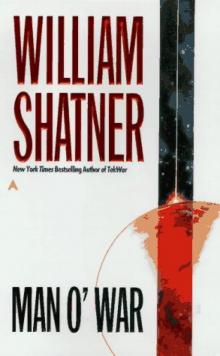 Man O' War
Man O' War Shatner Rules
Shatner Rules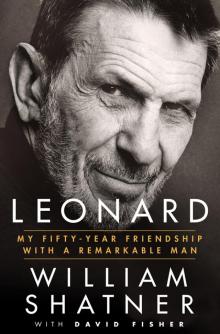 Leonard
Leonard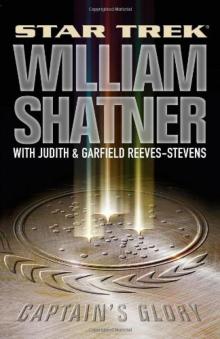 Captain's Glory
Captain's Glory Captain's Glory зпвш-9
Captain's Glory зпвш-9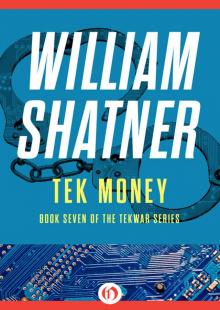 Tek Money
Tek Money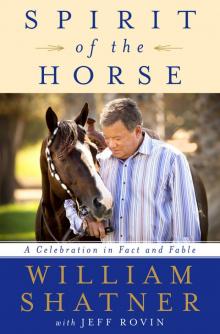 Spirit of the Horse
Spirit of the Horse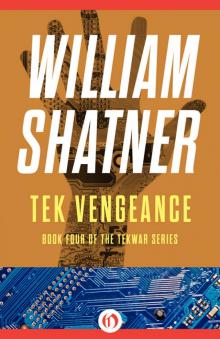 Tek Vengeance
Tek Vengeance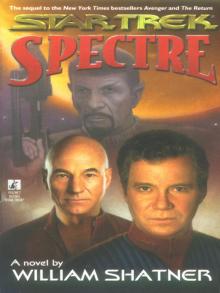 Spectre
Spectre Zero-G
Zero-G Tek Kill
Tek Kill Collision Course
Collision Course TekLab
TekLab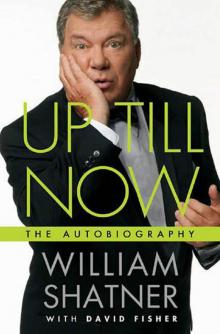 Up Till Now
Up Till Now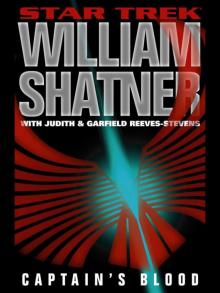 Captain's Blood
Captain's Blood TekWar
TekWar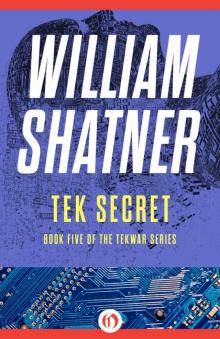 Tek Secret
Tek Secret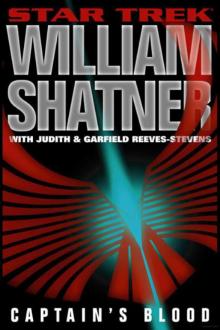 Captain's Blood зпвш-8
Captain's Blood зпвш-8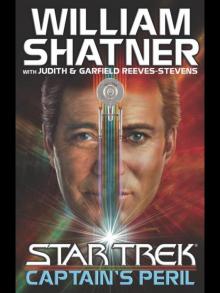 Captain's Peril
Captain's Peril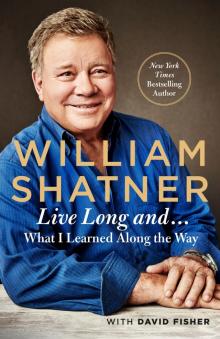 Live Long and . . .
Live Long and . . .